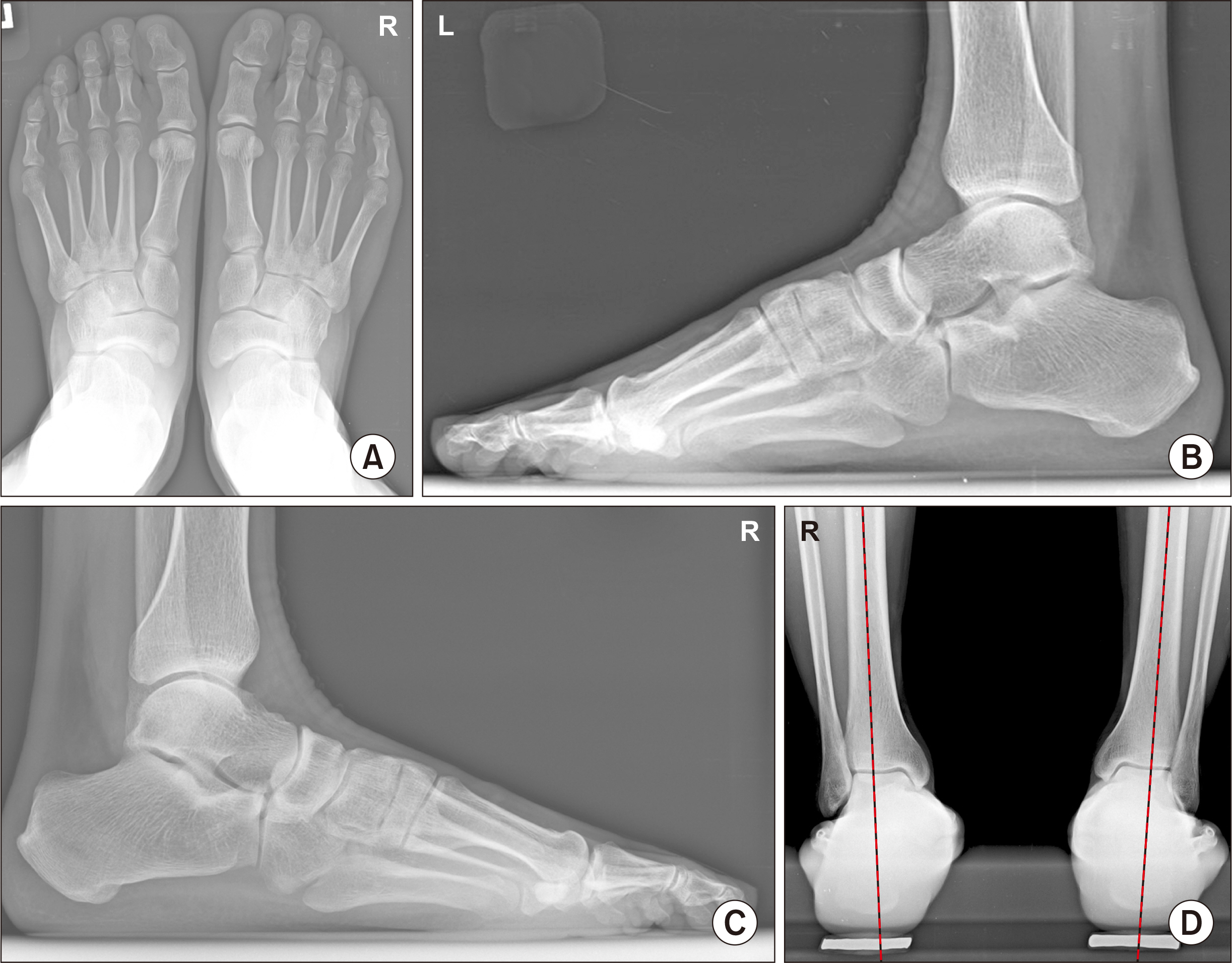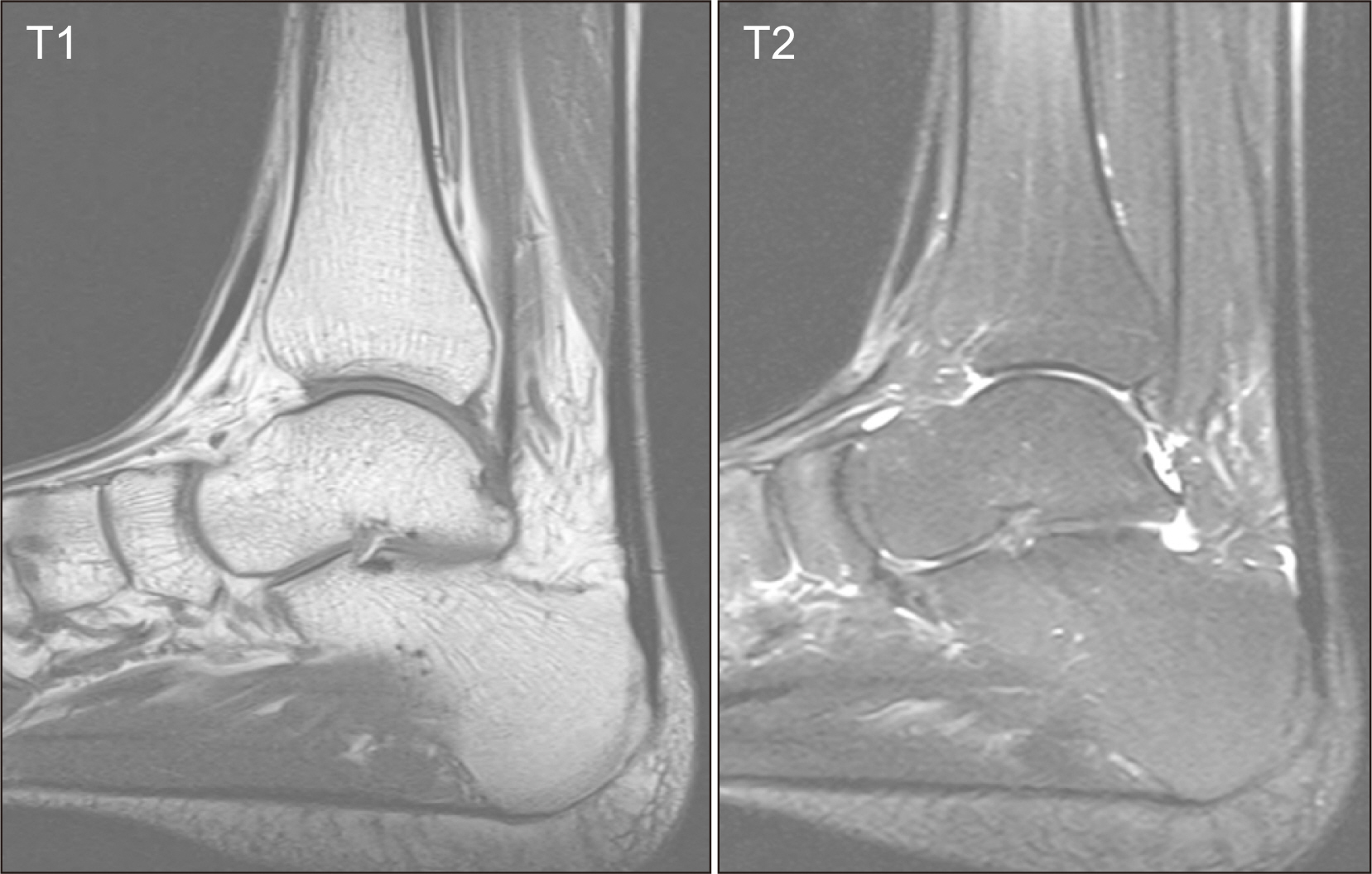J Korean Foot Ankle Soc.
2023 Sep;27(3):103-107. 10.14193/jkfas.2023.27.3.103.
Refractory Achilles Tendinopathy and Multiple Pain on the Tendon and Tendon Attachment Site of the Foot Related to Intermittent Levofloxacin Usage: A Case Report
- Affiliations
-
- 1Department of Orthopaedic Surgery, Ilsan Paik Hospital, Inje University College of Medicine, Goyang, Korea
- KMID: 2545989
- DOI: http://doi.org/10.14193/jkfas.2023.27.3.103
Abstract
- Quinolone antibiotics are frequently prescribed for suspected respiratory or urinary tract infections because of their effectiveness and generally perceived safety profile. On the other hand, some studies have raised concerns regarding the potential association between quinolone use and Achilles tendinopathy or tendon rupture. There is a lack of reports on the link between quinolone use and multiple tendon and tendon attachment site pain in the foot and ankle joints; hence, this study examined this issue further. This paper presents a case report of a patient with persistent Achilles tendinopathy and multiple tendon and tendon attachment site pain in the foot who did not respond adequately to conservative treatments. In particular, the discontinuation of quinolone use resulted in favorable clinical outcomes. This report offers valuable insights into the potential risks associated with quinolone antibiotics and highlights the importance of vigilance when managing patients with tendon-related complaints. A comprehensive review of the relevant literature is also presented to contextualize these findings.
Figure
Reference
-
1. Ahn HS, Kim HJ, Suh JS, Kazmi SZ, Kang TU, Choi JY. 2023; The association of body mass index and waist circumference with the risk of Achilles tendon problems: a nationwide population-based longitudinal cohort study. Clin Orthop Surg. 15:488–98. doi: 10.4055/cios22238. DOI: 10.4055/cios22238. PMID: 37274500. PMCID: PMC10232319.
Article2. Lewis JR, Gums JG, Dickensheets DL. 1999; Levofloxacin-induced bilateral Achilles tendonitis. Ann Pharmacother. 33:792–5. doi: 10.1345/aph.18298. DOI: 10.1345/aph.18298. PMID: 10466906.
Article3. Lipsky BA, Baker CA. 1999; Fluoroquinolone toxicity profiles: a review focusing on newer agents. Clin Infect Dis. 28:352–64. doi: 10.1086/515104. DOI: 10.1086/515104. PMID: 10064255.
Article4. Fernández-Cuadros ME, Casique-Bocanegra LO, Albaladejo-Florín MJ, Gómez-Dueñas S, Ramos-Gonzalez C, Pérez-Moro OS. 2019; Bilateral levofloxacin-induced Achilles tendon rupture: an uncommon case report and review of the literature. Clin Med Insights Arthritis Musculoskelet Disord. 12:1179544119835222. doi: 10.1177/1179544119835222. DOI: 10.1177/1179544119835222. PMID: 30858744. PMCID: PMC6402071.
Article5. Durey A, Baek YS, Park JS, Lee K, Ryu JS, Lee JS, et al. 2010; Levofloxacin-induced Achilles tendinitis in a young adult in the absence of predisposing conditions. Yonsei Med J. 51:454–6. doi: 10.3349/ymj.2010.51.3.454. DOI: 10.3349/ymj.2010.51.3.454. PMID: 20376902. PMCID: PMC2852805.
Article6. Greene BL. 2002; Physical therapist management of fluoroquinolone-induced Achilles tendinopathy. Phys Ther. 82:1224–31. doi: 10.1093/ptj/82.12.1224. DOI: 10.1093/ptj/82.12.1224. PMID: 12444881.
Article7. van der Linden PD, Sturkenboom MC, Herings RM, Leufkens HG, Stricker BH. 2002; Fluoroquinolones and risk of Achilles tendon disorders: case-control study. BMJ. 324:1306–7. doi: 10.1136/bmj.324.7349.1306. DOI: 10.1136/bmj.324.7349.1306. PMID: 12039823. PMCID: PMC113766.
Article8. van der Linden PD, van Puijenbroek EP, Feenstra J, Veld BA, Sturkenboom MC, Herings RM, et al. 2001; Tendon disorders attributed to fluoroquinolones: a study on 42 spontaneous reports in the perio 1988 t 1998. Arthritis Rheum. 45:235–9. doi: 10.1002/1529-0131(200106)45:3<235::AID-ART254>3.0.CO;2-7. DOI: 10.1002/1529-0131(200106)45:3<235::AID-ART254>3.0.CO;2-7. PMID: 11409663.9. Bidell MR, Lodise TP. 2016; Fluoroquinolone-associated tendinopathy: does levofloxacin pose the greatest risk? Pharmacotherapy. 36:679–93. doi: 10.1002/phar.1761. DOI: 10.1002/phar.1761. PMID: 27138564.
Article10. Harrell RM. 1999; Fluoroquinolone-induced tendinopathy: what do we know? South Med J. 92:622–5. doi: 10.1097/00007611-199906000-00014. DOI: 10.1097/00007611-199906000-00014. PMID: 10372859.
- Full Text Links
- Actions
-
Cited
- CITED
-
- Close
- Share
- Similar articles
-
- Heterotopic Ossification of a Partially Ruptured Achilles Tendon (A Case Report)
- Surgical Strategies for Achilles Tendinopathy
- Surgical Treatment of Tuberculous Achilles Tendinitis: Case Report
- Etiology of Achilles Tendinopathy: Inflammation versus Overuse
- Nonoperative Treatment of Achilles Tendinopathy



